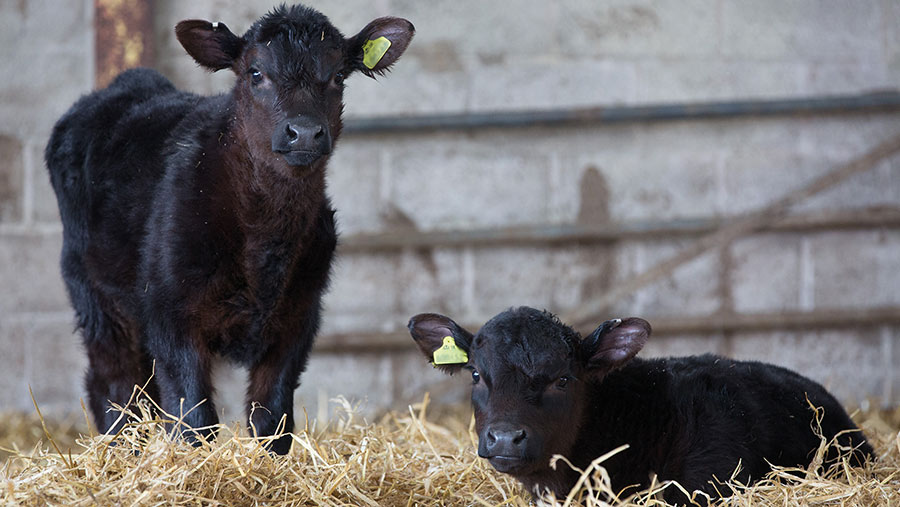Autumn calvers warned of coccidiosis risk to youngstock
 © Elanco UK
© Elanco UK
Autumn calvers are being reminded about the risk of coccidiosis in young calves and encouraged to take steps to reduce risk of infection and detect the disease early.
Identifying the infection before it takes hold can prevent scours, gut damage and the subsequent impact on performance the intestinal disease can cause.
Emily Postlethwaite, from Marches Veterinary Group, explains that calves are most vulnerable to infection between four and 12 weeks old, so understanding the environmental challenge and high-risk periods are paramount.
“Autumn calving marks the beginning of a high-risk time, especially for herds with a protracted calving period, as younger calves can pick up coccidiosis oocysts that have been shed by older calves,” she says.
Early detection
The ideal approach is to regularly weigh calves to pinpoint underperformance as early as possible, recommends Ms Postlethwaite. This enables investigation and treatment before clinical symptoms, such as scouring, are seen.
“An alternative less labour-intensive approach is to take regular dung samples from around 10% of the calves in a group and send these to the vet for analysis.
“By including speciation in the analysis, in addition to an oocyst count, it is possible to detect whether disease-causing parasitic infections are impacting calf growth and performance.”
If pathogenic coccidiosis oocysts are detected, it is advisable to treat the whole group – as even those not yet showing signs are likely to have picked up oocysts from the environment.
Treatment
Products that contain the active ingredient decoquinate or toltrazuril are licensed products that can be used in the treatment and prevention of coccidiosis.
Decoquinate works early in the Eimeria lifecycle, destroying them during the infectious stages. Sadly, it is not as effective in calves that are already infected, so it is imperative to administer it before the onset of the risk period.
Toltrazuril will destroy the parasite in the later life stages, when it’s in the intestinal cells and helps to reduce pasture contamination.
Our guide on coccidiosis in calves explains more about signs, symptoms, treatment and reinfection
Environment
Careful management to manage the numbers of oocysts in the environment is also key.
“If we have a wet autumn, the infection risk will further increase, as the environment will be more favourable for the oocysts to spread from calf to calf,” Ms Postlethwaite says.
Tips to reduce the level of risk include:
Indoor calving herds
- Raise water troughs to avoid faecal contamination
- Muck out regularly
- Clean with a disinfectant that is known to have coccidiocidal properties to kill oocysts
Outdoor calving herds
- Fence off water courses or ponds to prevent access to potentially contaminated water
- Avoid poaching around bale feeders and water troughs to reduce the build-up of coccidiosis oocysts in wet areas
